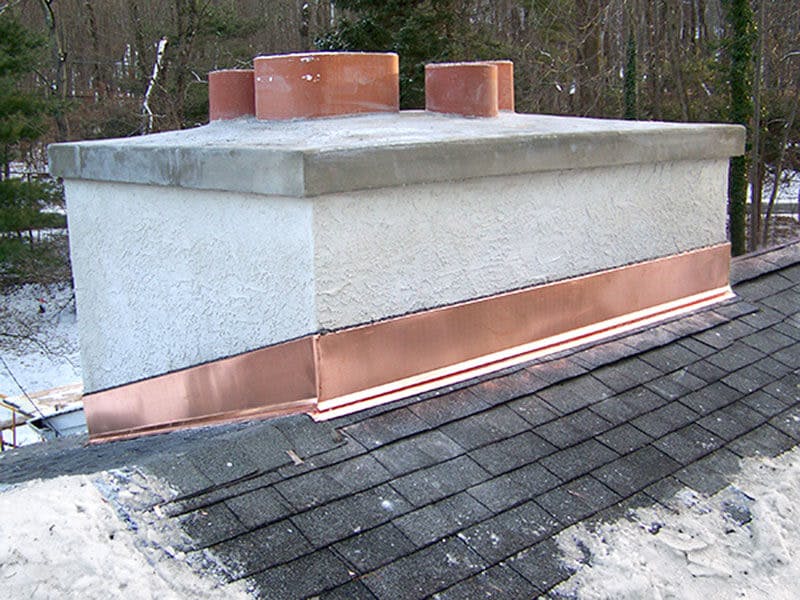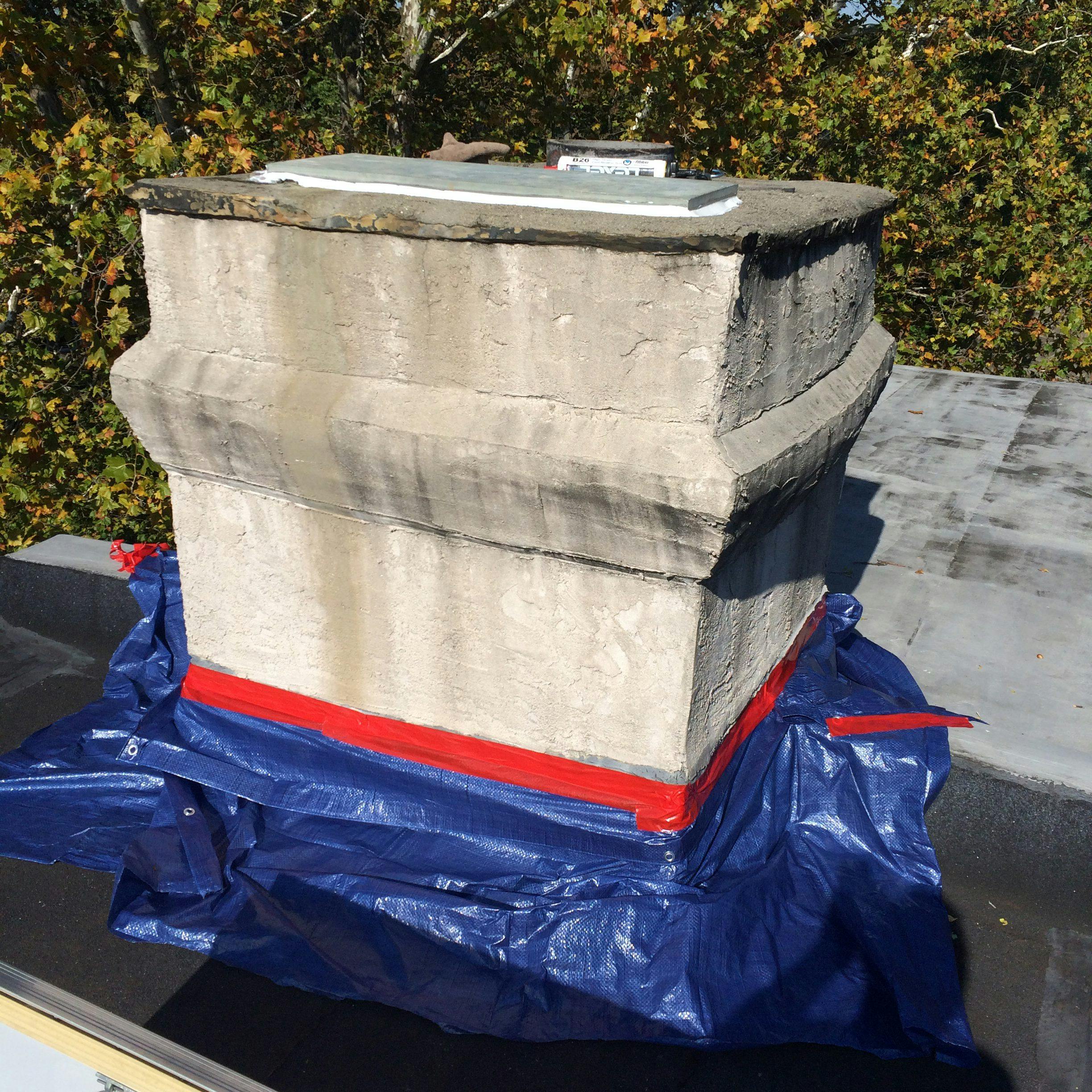Stucco chimneys are growing in popularity, and for good reason. Stucco is attractive, relatively inexpensive, and very durable. It is also quite versatile. However, just like any other material, stucco requires some upkeep and, at some point, needs some repair or remediation.
Stucco — Staying Strong through the Years

As a type of plaster made from lime, sand, and water, stucco can either be applied to existing surfaces or wire lath to create a new surface. You can customize the color of the outermost layer and can also have it finished in acrylic or cement.
This material has undergone many changes over the years, especially as its popularity began to increase during the mid-1900s. During that time, animal or plant fiber was added for strength, and later, lime replaced Portland cement for a time in an effort to further increase durability.
However, lime stucco could still be chipped without too much force, and Portland stucco could crack easily without a stable base. Now, lath is often used as a support system for stucco applications to increase tensile strength.
Today, modern Portland cement stucco is applied over a mesh lattice tightly secured to a surface. This makes it a very sturdy material that is aesthetically beautiful and capable of lasting many years.
A Common Cause of Repairs: Moisture

Moisture that seeps into stucco chimneys is one of the most common causes of stucco damage that requires repair or remediation. Once moisture is present, it can result in wall rot, wood rot, mold discoloration, and other problems.
There are three key reasons why a stucco chimney can develop moisture problems:
- An incorrectly installed chimney/stucco system
- An older home that has cracks due to settling and expansion
- A stucco installation that did not account for stucco’s porous nature
The fact that stucco is porous means that it will still absorb some level of water through the years. For this reason, stucco chimneys that are installed for homes and buildings in a dry climate will likely thrive easily for several decades.
However, this doesn’t mean that stucco can’t be used in wetter climates; it just has to be installed and maintained by professionals.
It’s also advisable that homeowners of stucco chimneys who don’t reside in desert climates have their chimneys inspected by experts regularly. This is because, when water infiltrates a stucco chimney, the damage often goes unnoticed until it’s too late for a quick, simple repair.
It’s critical that you always only rely on a leading mason with plenty of experience when it comes to stucco chimney repair. Far too often, improper repairs are done — like covering existing chimneys with stucco without using metal lath — that, over the years, can cause extensive damage to the home.
Unfortunately, homeowners may not be aware the damage is occurring until much later when the damage has spread to the chimney, roof, and beyond.
How Can You Tell if Stucco Chimneys Are Damaged?

When a stucco chimney is failing, it allows water penetration, and the damage begins. There are some distinct warning signs that you can look out for that can tip you off to a water problem and other types of damage. Some of these indicators include:
- Missing chunks of stucco on the visible exterior of your chimney facade
- Dark and/or damp spots on the inside or outside of the chimney or your home
- Cracks in your stucco
You can also look at areas of the house other than the chimney for clues about any unseen water damage that might occur due to a bad stucco chimney. Check the areas around your doors, windows, and ground clearance to see if there are dark spots, cracks, or missing chunks of material.
If you are unsure about looking for signs of stucco chimneys in disrepair, it’s always best to reach out to a professional mason who can quickly evaluate the condition of your stucco and recommend the best course of action.
The Bottom Line on Repairing Stucco Chimneys
The good news is that stucco is usually easy to repair. However, the longer a problem exists, the more extensive the repairs can become. For this reason, it’s critical that you perform visual inspections regularly of your stucco chimneys. You should also have a professional mason complete an expert inspection at least once each year.
The cause of stucco cracking or displaying other types of damage should always be investigated as soon as possible, and it usually calls for professional attention to be appropriately remedied. In general, any cracks that you find that are wider than the width of a credit card should always be cared for by expert masons.
Remediating stucco chimneys is handled much the same way as applying stucco. First, the previous stucco must be removed. If this is done incorrectly — or simply “patched up” — this poor-quality remedy can easily result in many additional expensive, and avoidable, problems and repairs down the road.
For cracks that are not overly broad, your expert mason can use pre-mixed acrylic finishes that can stretch over and fill in those cracks, as long as those cracks are confined to the surface of the stucco. This can not only improve the appearance of stucco chimneys but also help limit further moisture seepage and damage.
Contact McNamara Masonry for Stucco Chimney Repairs
Your home is likely your most significant investment, and that includes your stucco chimney. Dealing with stucco chimney repairs sooner rather than later is the key to preventing further damage to your stucco and your home. With proper maintenance, you can enjoy this central feature of your home for years to come.
If your stucco chimney is damaged or leaking, or if you would like your home’s stucco inspected, the expert masons at McNamara Masonry can help. Licensed in Pennsylvania, New Jersey, and Delaware, we offer a five-year warranty on materials and labor and are industry leaders in stucco chimney restoration and repair.
For top-quality home exterior service, contact our professional masons today.
